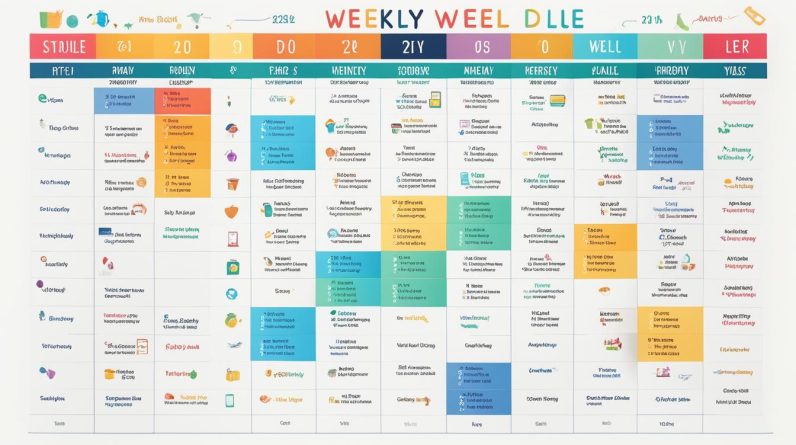When it comes to homeschooling, one important aspect to consider is standardized testing. Home school testing helps assess your child’s academic progress and provides valuable insights into their strengths and areas for improvement. However, with the plethora of options available, it can be challenging to navigate the world of home school testing in the USA. This article will guide you through the key considerations and factors to help you make informed decisions for your child’s educational journey.
Key Takeaways:
- Standardized testing is an essential tool for assessing academic progress in homeschooling.
- Understanding the different testing options and formats available is crucial for selecting the right test for your child.
- Consider factors like age of the test, availability of norms, test format (timed vs. untimed), and whether the test is fixed or adaptive.
- Interpreting and utilizing test results can help you identify areas for improvement and track your child’s progress over time.
- It’s important to be aware of your state’s legal requirements for standardized testing in homeschooling to ensure compliance.
Choosing the Right Standardized Test for Your Homeschool
When it comes to homeschooling, selecting the appropriate standardized test is crucial for evaluating your child’s academic progress. There are several homeschool testing options available, each with its own unique features and scoring methods. By understanding the different tests and their suitability for your homeschool, you can make an informed decision.
Here are some popular standardized tests for homeschoolers:
- NWEA MAP Growth: This computer-based assessment measures a student’s academic growth and provides personalized learning recommendations.
- Stanford 10: A comprehensive assessment that evaluates knowledge in various subjects and generates reliable results.
- Iowa/ITBS: The Iowa Tests of Basic Skills assesses key educational areas and provides grade-level equivalent scores.
- CAT5: The California Achievement Test (CAT) assesses understanding in core subjects and offers immediate scoring and interpretation.
- TerraNova 2/CAT 6: A widely used test that measures student knowledge and skills across multiple subjects.
- Online CAT: Computer-adaptive testing that tailors questions to the student’s ability level, providing accurate and detailed results.
- Peabody: The Peabody Individual Achievement Test offers a comprehensive assessment of various academic areas.
- BASI: The Basic Achievement Skills Inventory evaluates a student’s competency in essential learning domains.
Comparing these tests based on factors such as scoring norms, age appropriateness, and test format (timed or untimed, fixed or adaptive) will help you choose the most suitable option for your homeschool.
Here is an example table comparing key features of some popular standardized tests:
| Test | Scoring Norms | Age Appropriateness | Test Format |
|---|---|---|---|
| NWEA MAP Growth | Growth norms | Kindergarten to grade 12 | Computer-based |
| Stanford 10 | Percentile ranking | Grade 1 to grade 12 | Paper-based |
| Iowa/ITBS | Grade-level equivalent scores | Grade 1 to grade 8 | Paper-based |
| CAT5 | Percentile ranking | Grade 1 to grade 12 | Paper-based or online |
| TerraNova 2/CAT 6 | Percentile ranking | Grade kindergarten to grade 12 | Paper-based or online |
| Online CAT | Adaptive scoring | Grade 1 to grade 12 | Computer-based |
| Peabody | Percentile ranking | Grade K to grade 12 | Paper-based or online |
| BASI | Standard score | Grade K to grade 12 | Paper-based |
Remember, every child is unique, and what works for one homeschool may not work for another. Take the time to research and understand your options, considering factors such as your child’s strengths, weaknesses, and educational goals. With careful consideration, you can choose the right standardized test that aligns with your homeschooling philosophy and supports your child’s academic growth.
Understanding Norms in Standardized Testing
In standardized testing, norms play a crucial role in scoring and interpreting test results. Norms provide a frame of reference by comparing a child’s performance to the results of other children in the same grade at the same time of year. By utilizing norms, standardized tests provide valuable insights into a student’s academic standing and growth.
One commonly used statistical measure in norm-referenced testing is percentile ranking, which indicates the percentage of students who scored lower than a particular student. For example, if a student scores in the 75th percentile, it means they performed better than 75% of their same-grade peers. Percentile rankings allow parents and educators to understand how a student’s performance compares to others.
Growth norms, on the other hand, focus on measuring a student’s academic growth over time. They compare a child’s performance to other children of the same grade, same season, and similar starting performance level. Growth norms provide valuable insights into a student’s progress and enable educators to identify areas of improvement.
When interpreting standardized test results, it’s crucial to consider age-mates comparison. Age-mates comparison involves comparing a student’s performance to their peers who are of the same age. This comparison ensures that the norm group used is representative of the child’s peer group and provides a more accurate assessment of their academic standing.
It’s worth noting that norms in standardized testing can become outdated over time. As educational standards evolve and change, the norms established in previous years may no longer accurately reflect the current performance levels of students. Therefore, it is important to ensure that standardized tests utilize up-to-date norms to provide accurate comparisons and assessments.
“Understanding norms in standardized testing is essential for accurately interpreting test results and gaining insights into a student’s academic standing,” says Dr. Emily Johnson, an expert in educational assessment.
“By comparing a student’s performance to their peers and utilizing growth norms, standardized testing provides valuable information for monitoring educational progress and identifying areas for improvement.”

Let’s consider an example to further illustrate the concept of percentile ranking. Sarah, a homeschool student, takes a standardized test and scores in the 85th percentile for mathematics. This means that Sarah performed better than 85% of her same-grade peers who took the test at the same time. By understanding her percentile ranking, Sarah’s parents and educators can gauge her performance relative to her peers and identify areas where she excels or may need additional support.
In conclusion, norms in standardized testing, such as percentile rankings and growth norms, provide essential benchmarks for comparing a student’s performance to their peers and tracking their academic progress over time. By understanding and considering these norms, homeschooling parents and educators can gain valuable insights into a student’s academic standing and make informed decisions to support their educational journey.
Timed vs Untimed Tests in Homeschooling
In standardized testing, you have a choice between timed tests and untimed tests for your homeschool students. Timed tests require students to complete the test within a specified time limit, while untimed tests allow students to work at their own pace without any time constraints.
Untimed tests have several advantages for homeschoolers. First, they focus on measuring what your child can do, rather than how quickly they can do it. This approach allows for a more accurate assessment of your child’s skills and knowledge, as they have the time to carefully work through each question.
Another benefit of untimed tests is that they provide a more comfortable testing experience for homeschool students. Many homeschoolers are not accustomed to the strict time limits often imposed in timed tests. By removing the time pressure, untimed tests enable students to feel more relaxed and confident while demonstrating their abilities.
It’s important to note that untimed tests should be administered appropriately. While some students may thrive in an untimed setting, others may require accommodations to ensure a fair and accurate assessment of their abilities. For example, special needs students may need additional time or modifications to the test format to accommodate their unique learning requirements.
By choosing untimed tests and making accommodations when necessary, you can create a testing environment that supports your homeschool students’ success and provides an accurate reflection of their abilities.
Advantages of Untimed Tests
- Promotes a more accurate assessment of your child’s skills and knowledge
- Creates a comfortable testing experience for homeschool students
- Accommodates special needs students
Accommodations for Special Needs Students
Special needs students may require specific accommodations to ensure a fair and accurate assessment. Some possible accommodations include:
- Additional time
- Modified test format (e.g., audio or visual aids)
- Assistive technology
- Alternative response options
It’s important to consult with professionals, such as educators or educational psychologists, to determine the appropriate accommodations for your special needs student.
| Advantages of Untimed Tests |
|---|
| Promotes a more accurate assessment of your child’s skills and knowledge |
| Creates a comfortable testing experience for homeschool students |
| Accommodates special needs students |
Fixed vs Adaptive Tests in Homeschooling
When it comes to standardized testing in homeschooling, there are two main types: fixed tests and adaptive tests. Each type has its unique characteristics and benefits. Let’s take a closer look at the differences between fixed and adaptive tests and understand how they can impact the assessment of homeschool students.
Fixed Tests
Fixed tests, also known as traditional tests, present the same set of questions to all students. These tests follow a predetermined structure and difficulty level. The questions cover a broad range of topics and assess a student’s knowledge across various subject areas. Fixed tests are standardized and allow for easy comparison of results between different students and schools.
One of the advantages of fixed tests is their consistency. The standardized nature of these tests ensures fairness and reliability in scoring, as all students are evaluated using the same criteria. Fixed tests also provide a benchmark for assessing performance against grade-level standards and national averages.
Adaptive Tests
Adaptive tests, on the other hand, offer a tailored assessment experience for homeschool students. These tests dynamically adjust the difficulty of questions based on a student’s responses. When a student answers a question correctly, the subsequent questions become more challenging. Conversely, if a student answers incorrectly, the following questions become easier.
The adaptive nature of these tests allows for a more accurate evaluation of a student’s proficiency and areas of strength and weakness. Adaptive tests provide a personalized learning experience, focusing on identifying and addressing specific areas that require improvement. By adapting the difficulty level, these tests ensure that students are appropriately challenged, maximizing their potential for growth.
The Advantages of Adaptive Tests in Homeschooling
Adaptive tests offer several advantages for homeschooling families:
- Tailored Assessment: Adaptive tests provide a customized assessment experience, adapting to each student’s abilities and measuring their true potential.
- Identifying Strengths and Weaknesses: By adjusting the difficulty level of questions, adaptive tests help pinpoint a student’s strengths and weaknesses in specific subject areas.
- Individualized Learning: The personalized nature of adaptive tests allows for a targeted learning experience, focusing on areas that require improvement and minimizing time spent on topics already mastered.
- Enhanced Curriculum Planning: With a clear understanding of a student’s abilities and areas for improvement, adaptive tests provide valuable insights for curriculum planning, enabling parents to tailor their educational approach.
Strengths and Weaknesses of Fixed and Adaptive Tests
Both fixed and adaptive tests have their strengths and weaknesses. Here is an overview:
| Fixed Tests | Adaptive Tests |
|---|---|
| Consistency in evaluating all students | Personalized assessment tailored to individual abilities |
| Straightforward comparison of results | Identification of specific strengths and weaknesses |
| Useful for benchmarking against grade-level standards | Optimized learning experience with adaptive difficulty |
| May not provide a detailed analysis of strengths and weaknesses | Requires sophisticated adaptive testing algorithms |
As a homeschooling parent, understanding the strengths and weaknesses of fixed and adaptive tests can help you make informed decisions about the assessment tools and approaches that best fit your child’s educational needs and goals.

Testing Formats for Homeschoolers
When it comes to standardized testing, homeschoolers have the flexibility to choose between computer-based tests and paper-based tests. Each format has its own unique features and benefits, allowing parents to select the option that best suits their preferences and needs.
Computer-based tests, particularly online tests, offer convenience and simplicity for both parents and students. These tests can be easily accessed and completed from the comfort of your own home, eliminating the need for physical test booklets and answer sheets. Online tests often provide immediate test results, allowing you to receive feedback on your child’s performance without any delay. These immediate results can be incredibly valuable for monitoring your child’s progress and identifying areas that may require additional attention.
Furthermore, online tests typically generate detailed score reports that provide insights into your child’s strengths and weaknesses, allowing you to tailor your homeschool curriculum accordingly. These detailed reports can be immensely helpful in tracking your child’s academic growth over time and making informed decisions about their educational development.

On the other hand, some homeschooling families may prefer paper-based tests for a more traditional testing experience. Paper-based tests involve the physical administration of test booklets and answer sheets, which can be beneficial for students who feel more comfortable with this format. While paper-based tests may require scheduling, waiting for materials to arrive, and waiting for paper test results, they provide an opportunity for students to engage with the testing process in a familiar way.
Ultimately, the choice between computer-based tests and paper-based tests depends on your personal preferences and the specific needs of your homeschooling journey. Consider factors such as convenience, immediate test results, and the desire for a traditional testing experience when determining which format is the best fit for your family.
Standardized Testing Options for Homeschoolers
Homeschoolers have access to a range of standardized testing options to assess their child’s academic progress. These tests cover various subjects and grade levels, providing homeschooling parents with valuable insights into their child’s strengths and areas for improvement. Let’s take a closer look at some popular standardized testing options for homeschoolers:
Iowa Assessments
The Iowa Assessments is a widely recognized standardized test that measures students’ understanding of key academic concepts in areas such as reading, language, mathematics, science, and social studies. It assesses students from kindergarten to grade 12 and provides detailed reports that help parents track their child’s progress over time.
Stanford Achievement Tests
The Stanford Achievement Tests evaluate students’ knowledge and skills in various subject areas, including reading, language, mathematics, science, and social studies. These tests are designed for students from kindergarten to grade 12 and provide comprehensive score reports to help parents understand their child’s academic strengths and weaknesses.
California Achievement Test (CAT)
The California Achievement Test (CAT) is a widely used standardized test that assesses students’ understanding of key academic concepts in subjects such as reading, language, mathematics, spelling, and science. It is available for students from kindergarten to grade 12 and provides detailed score reports to aid parents in evaluating their child’s academic performance.
Peabody Individual Achievement Test (PIAT)
The Peabody Individual Achievement Test (PIAT) is a comprehensive assessment tool that measures students’ academic abilities in various subjects, including reading, math, spelling, and language. It is suitable for students from kindergarten to grade 12 and offers detailed reports to assist parents in identifying areas for improvement.
BJU Press Testing and Evaluation
BJU Press Testing and Evaluation provides homeschooling families with a range of standardized testing options tailored to various grade levels and subjects. These tests, developed by BJU Press, aim to assess students’ academic proficiency and provide valuable insights into their educational progress.
When selecting a standardized test for your homeschooling journey, it’s essential to consider factors such as your child’s grade level, subjects being assessed, and specific educational goals. Additionally, it’s crucial to verify that your state accepts the results of these tests before administering them. Utilizing testing services like BJU Press Testing and Evaluation can provide guidance and support in selecting the right test for your homeschool.
| Standardized Test | Grade Range | Subjects Assessed | Key Features |
|---|---|---|---|
| Iowa Assessments | Kindergarten to grade 12 | Reading, language, mathematics, science, social studies | Comprehensive assessment, detailed reports |
| Stanford Achievement Tests | Kindergarten to grade 12 | Reading, language, mathematics, science, social studies | Comprehensive assessment, detailed reports |
| California Achievement Test (CAT) | Kindergarten to grade 12 | Reading, language, mathematics, spelling, science | Comprehensive assessment, detailed reports |
| Peabody Individual Achievement Test (PIAT) | Kindergarten to grade 12 | Reading, math, spelling, language | Comprehensive assessment, detailed reports |
| BJU Press Testing and Evaluation | Varies by grade level | Varies by test | Options tailored to specific grade levels and subjects |

Test Preparation Tips for Homeschoolers
Preparing for standardized tests can greatly enhance the performance of homeschooling students. By implementing effective strategies and addressing test anxiety, you can help your child excel in their assessments. Here are some valuable tips to consider:
Reading Comprehension Strategies
Developing strong reading comprehension skills is essential for success on standardized tests. Encourage your child to practice active reading techniques such as highlighting key information, summarizing passages, and making connections between concepts. These strategies can enhance comprehension and improve performance on reading-related test sections.
Practice Tests
Engaging in regular practice tests can familiarize your child with the test format and content while building confidence. Look for practice materials specifically designed for the standardized test your child will be taking. These resources often provide sample questions and simulated test environments, allowing your child to become more comfortable and better prepared.
Test-Taking Tips
- Teach your child time-management skills to ensure they complete each section within the allocated time.
- Emphasize the importance of carefully reading and understanding each question before answering.
- Instruct them to answer questions they know first, then revisit more challenging ones.
- Encourage them to utilize educated guessing strategies when they are unsure of an answer, eliminating obviously incorrect options to improve their chances of selecting the correct response.
- Remind your child to review their answers, double-checking for errors or unanswered questions.
Addressing Test Anxiety
Test anxiety can hinder performance, so it’s important to help your child manage and minimize it. Consider the following tips:
- Establish a routine leading up to the test day to create a sense of familiarity and calmness.
- Ensure your child gets enough sleep the night before the test to optimize their focus and cognitive abilities.
- Encourage them to eat a nutritious breakfast on the testing day to fuel their brain and promote alertness.
- Provide healthy snacks to keep their energy levels steady during the test.
By implementing these test preparation strategies, you can empower your homeschooling student to approach standardized tests with confidence and achieve optimal results.
| Test Preparation Tips for Homeschoolers |
|---|
| Develop strong reading comprehension skills through active reading techniques. |
| Regularly practice with sample tests to familiarize your child with the format and content. |
| Teach time-management skills and strategies for answering questions effectively. |
| Help your child address test anxiety and promote a calm test-taking environment. |
Interpreting Standardized Test Results for Homeschoolers
Interpreting standardized test results is an important step for homeschooling families. These test results provide valuable insights into your child’s academic performance and can help you make informed decisions about their education. Here’s what you need to know:
Identifying Areas for Improvement
Standardized tests can reveal specific subject areas where your child may need additional support or improvement. By analyzing the test results, you can identify any gaps in their understanding and tailor your homeschool curriculum accordingly. Whether it’s math, reading, or science, these results offer valuable guidance to enhance your child’s learning experience.
Tracking Progress Over Time
Regular standardized testing allows you to track your child’s progress over time. By comparing their current test results to previous ones, you can observe growth and improvement in various subject areas. This helps you gauge the effectiveness of your teaching methods and make necessary adjustments to optimize their learning journey.
Comparing to Grade-Level Standards
Standardized tests provide a benchmark for comparing your child’s performance to grade-level standards. These tests are aligned with national educational standards, allowing you to assess your child’s academic abilities in relation to their peers. This comparison helps you determine if your homeschool curriculum is adequately preparing them for their grade level.
Limits of Test Results
It’s important to understand the limitations of standardized test results. While these tests offer valuable insights, they do not capture the full spectrum of your child’s education. Each child is unique, and their abilities and strengths may extend beyond what a test can measure. Therefore, it’s essential to consider test results in conjunction with other forms of assessment, such as portfolio evaluations or project-based assessments, to gain a comprehensive understanding of your child’s progress and abilities.
“Interpreting standardized test results provides a snapshot of your child’s academic performance, but it’s important to remember that it’s just one piece of the puzzle.”
By interpreting standardized test results, homeschooling parents can gain valuable insights into their child’s academic abilities and areas for improvement. These results, when considered alongside other forms of assessment, help shape and refine the homeschooling experience, providing a solid foundation for your child’s educational success.
Pros and Cons of Interpreting Standardized Test Results
| Pros | Cons |
|---|---|
| Identifies areas for improvement | Does not capture all aspects of learning |
| Tracks progress over time | May induce test-related stress or anxiety |
| Provides comparison to grade-level standards | Results may not reflect a child’s full potential |
| Helps parents make informed decisions | Should be considered alongside other forms of assessment |
Overall, interpreting standardized test results is a valuable tool for homeschooling families. By understanding and analyzing these results, parents can identify areas for improvement, track their child’s progress, compare to grade-level standards, and make informed decisions about their education. It’s important to keep in mind the limitations of test results and use them in conjunction with other forms of assessment to ensure a comprehensive evaluation of your child’s academic abilities.
Legal Requirements for Standardized Testing in Homeschooling
Homeschooling families need to be aware of the legal requirements for standardized testing in their state or jurisdiction. Understanding and complying with these legal obligations is crucial for ensuring a successful homeschooling experience. Key factors to consider include state requirements, annual evaluations, reporting test results, and overall compliance with homeschooling regulations.
In the United States, each state has its own specific laws and regulations regarding homeschooling and standardized testing. While some states do not require standardized testing, many do mandate annual evaluations to assess a child’s academic progress. These evaluations often involve administering standardized tests as a measure of achievement and skills development.
To fulfill legal requirements, homeschooling parents must familiarize themselves with their state’s regulations and guidelines on standardized testing. This includes understanding the specific tests approved by the state and any mandates regarding the frequency and timing of the evaluations. Compliance with these requirements not only ensures adherence to the law but also provides valuable documentation of a child’s educational progress.
Once the testing has been conducted, it is essential to report the results accurately and promptly. State regulations may outline specific reporting procedures, such as submitting test scores or comprehensive evaluation reports to the appropriate educational authorities. Reporting test results in a timely manner demonstrates a commitment to compliance and transparency in homeschooling.
The Role of Compliance
Compliance with legal requirements for standardized testing in homeschooling serves several critical purposes. First and foremost, it helps ensure that homeschooling families are meeting the educational standards set by the state. By participating in the evaluation process, parents can provide evidence of their child’s academic progress and demonstrate their commitment to providing a high-quality education.
Moreover, compliance with standardized testing requirements establishes accountability for both homeschooling parents and the state. It allows educational authorities to monitor the effectiveness of homeschooling programs and verify that children are receiving an adequate education. Additionally, it helps build trust and credibility within the broader education community.
Complying with standardized testing regulations is also valuable for homeschooling parents themselves. Test results can provide valuable insights into a child’s academic strengths and areas for improvement. This information can help guide curriculum choices, inform teaching methods, and enhance the overall homeschooling experience.
State Requirements for Standardized Testing in Homeschooling
| State | Standardized Testing Requirement | Reporting Obligations |
|---|---|---|
| California | Yes | Submit test results annually |
| Texas | No | N/A |
| Florida | Yes | Submit test results annually |
| Ohio | Yes | Submit test results every three years |
| New York | Yes | Submit test results annually |
Note: The table above provides a general overview of state requirements for standardized testing in homeschooling and is subject to change. It is crucial for homeschooling parents to research and understand the specific regulations applicable in their state.
Compliance with legal requirements for standardized testing is fundamental in ensuring a successful homeschooling journey and maintaining a positive relationship with educational authorities. By understanding state regulations, conducting tests as mandated, and appropriately reporting results, homeschooling families can demonstrate their commitment to providing a high-quality education in accordance with the law. Familiarizing yourself with your state’s specific requirements is key to navigating the legal aspects of homeschool testing and ensuring a smooth and fulfilling homeschooling experience.
Standardized Testing in the Homeschooling Landscape
Standardized testing plays a unique role in the homeschooling landscape, providing various advantages and disadvantages for homeschooling families to consider. On one hand, standardized tests offer objective measurement, allowing parents to assess their child’s academic progress accurately. These tests also serve as a valuable tool for progress monitoring, helping parents identify areas for improvement and track their child’s educational success over time.
Moreover, standardized testing provides a sense of accountability, allowing homeschooling families to showcase their child’s achievements and meet legal requirements in some states. Additionally, standardized test scores can play a role in college admissions, providing homeschooled students with an opportunity to demonstrate their academic readiness to higher education institutions.
However, it is essential to weigh the disadvantages of standardized testing as well. These tests often have a limited scope, as they primarily assess a student’s proficiency in core subjects such as math, reading, and writing. Furthermore, some students may experience test anxiety, which can affect their performance and skew the results. Additionally, excessive focus on standardized testing may lead to a narrowing of the curriculum, potentially overlooking other important aspects of a child’s education.
Therefore, homeschooling families must make informed decisions about the role of standardized testing in their educational approach. By understanding the purpose and benefits of standardized testing, as well as its limitations, parents can navigate the testing landscape effectively, supporting their children’s educational success while maintaining a well-rounded and comprehensive homeschooling experience.
FAQ
What is the best standardized test for homeschooling?
There are several options to choose from, including NWEA MAP Growth, Stanford 10, Iowa/ITBS, CAT5, TerraNova 2/CAT 6, online CAT, Peabody, and BASI. It’s important to compare features, scoring methods, and test formats to find the best fit for your child.
What role do norms play in standardized testing?
Norms in standardized testing provide a basis for scoring. Percentile ranking compares a child’s performance to others in the same grade and time of year, while growth norms compare a child’s academic growth to others of the same grade, season, and performance level.
Should I choose a timed or untimed test for my homeschooler?
Untimed tests are often a better choice for homeschoolers, as they focus on assessing what a child can do rather than how quickly they can do it. Untimed tests also offer a more comfortable testing experience for students who may be less accustomed to strict time limits.
What is the difference between fixed and adaptive tests?
Fixed tests have the same set of questions for all students, while adaptive tests adjust the difficulty of the questions based on the student’s performance. Adaptive tests provide a more accurate assessment by tailoring the difficulty level to each student’s abilities.
What are the benefits of computer-based and paper-based tests?
Computer-based tests, especially online tests, offer convenience, immediate results, and detailed score reports. Paper-based tests provide a traditional testing experience but may require scheduling and waiting for materials and results.
What standardized testing options are available for homeschoolers?
Homeschoolers have options such as the Iowa Assessments, Stanford Achievement Tests, California Achievement Test (CAT), Peabody Individual Achievement Test (PIAT), and others. It’s important to verify that your state accepts the results of these tests before administering them.
How can I prepare my homeschooler for standardized tests?
Test preparation strategies such as reading comprehension techniques, practice tests, and test-taking tips can improve performance. Managing test anxiety and maintaining a healthy routine and diet on the testing day are also helpful tips.
How do I interpret standardized test results for my homeschooler?
Standardized test results can identify areas for improvement, track progress over time, and compare performance to grade-level standards. However, it’s important to remember that test results are just one tool in assessing a child’s education and should be considered alongside other forms of assessment.
What are the legal requirements for homeschool testing?
Each state or jurisdiction may have different requirements for standardized testing in homeschooling. Some states may require annual evaluations, including standardized testing, to demonstrate a child’s educational progress. Familiarize yourself with your state’s laws to ensure compliance.
What is the role of standardized testing in homeschooling?
Standardized testing offers advantages such as objective measurement, progress monitoring, accountability, and college admissions opportunities. However, it also has limitations and potential disadvantages. Homeschooling families must carefully consider the role of standardized testing in their educational approach and make informed decisions to support their children’s success.






